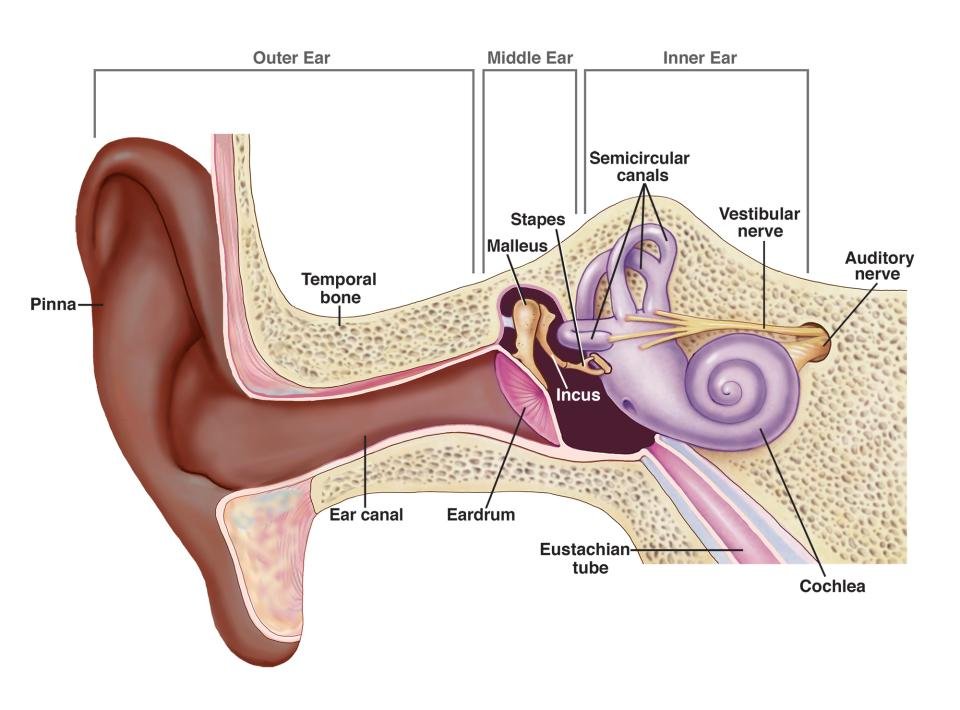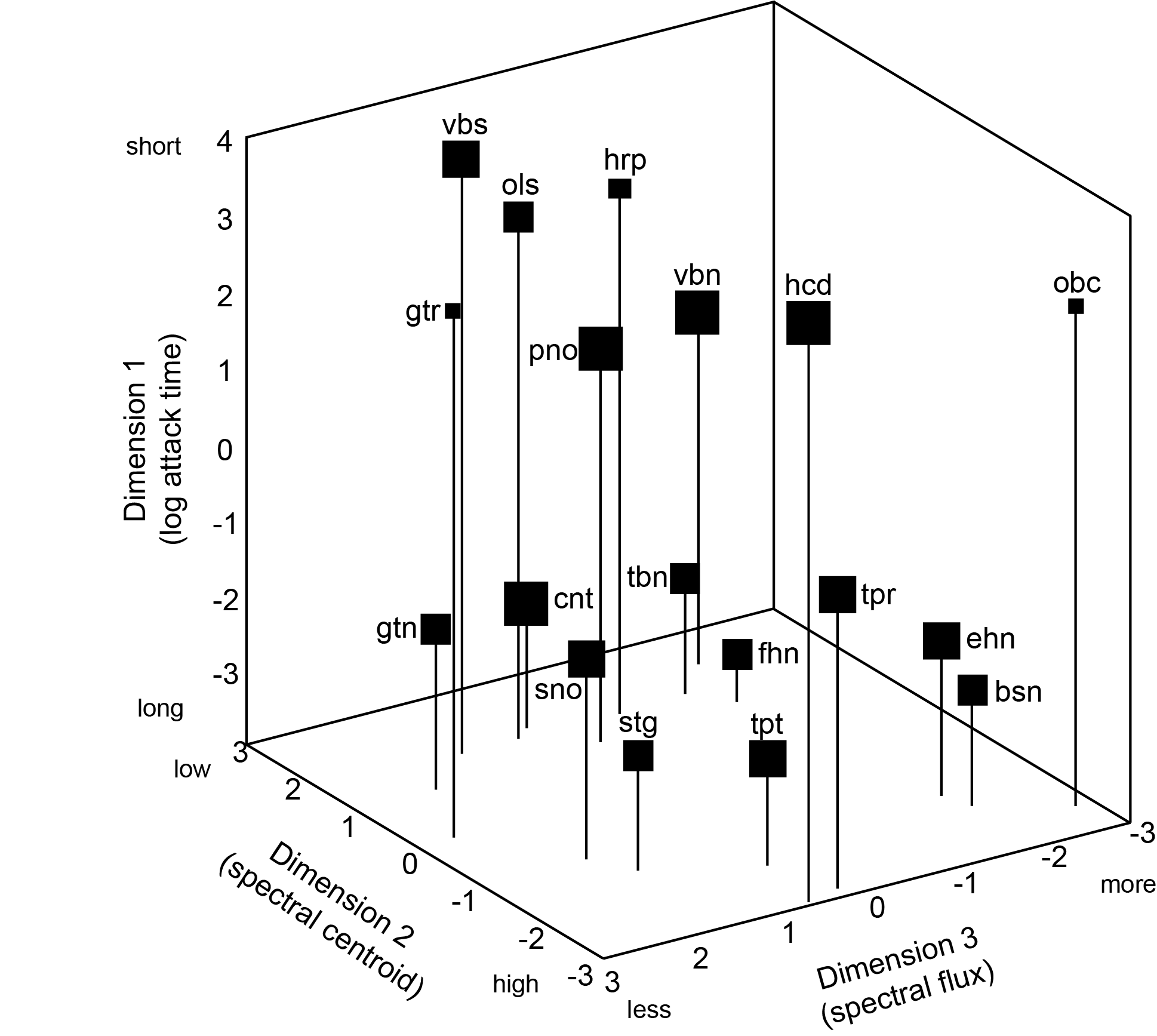Noise
EN | FR
Noise is a familiar everyday word that has many different meanings. Here, we are interested in its acoustical sense. In addition to partials, there are other sound components that do not have energy concentrated on a single frequency, but rather have a random or pseudo-random distribution of sound energy over a frequency range: this is acoustical noise. In its everyday connotations, noise can signify something unpleasant and unwanted, but acoustical noise can be extremely useful in music and in gleaning auditory information about the world.
Some sounds consist exclusively of noise, such as the familiar white noise made by televisions or radios when not tuned into an active station. White noise is sonic saturation, a statistically even distribution of sound energy across the entire spectrum. Other types of noise distribute energy differently: for example, in pink noise, the energy is concentrated towards the bottom of the spectrum and tapers off exponentially towards the top. Still other types of noise are concentrated on a relatively small frequency band or node, giving them a distinct colour but no distinct pitch, such as an orchestral triangle. Many complex pitched sounds, such as the sounds of most musical instruments, have noise components that may not be as readily apparent to the ear as their pitched counterparts, for example the sound of air rushing through a flute, or the scrape of the bow along a violin string. In electronic music, filtered noise, in which energy is shaped and sculpted according to various processes, can be a powerful compositional tool. As an example, check out this song by Infected Mushroom.



















